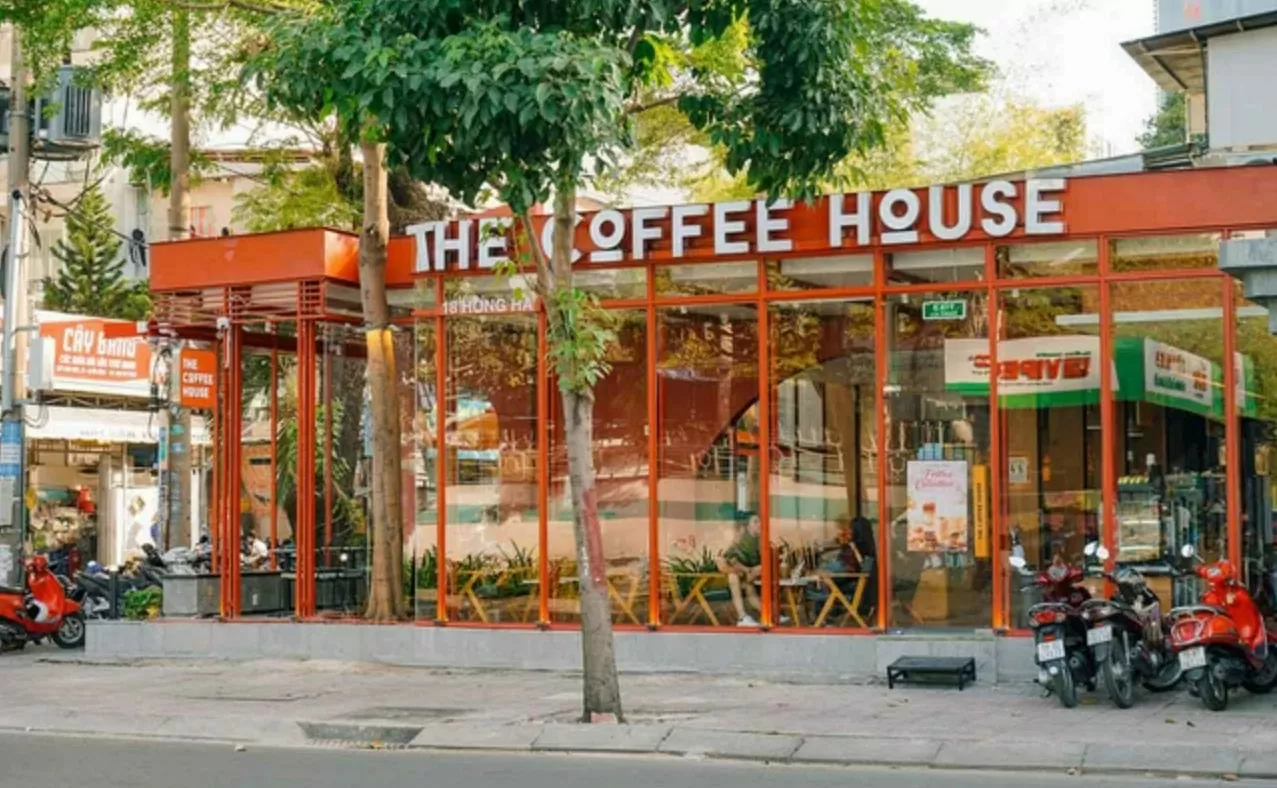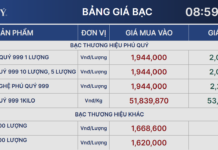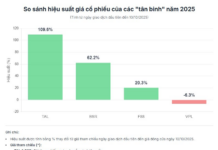Scaling Up or Downsizing?
In recent times, the ‘take-away’ coffee model has likely lost its novelty in Hanoi and many other provinces/cities. A small wooden cabinet, a chest of ice, a few plastic cups, and pre-made coffee bottles… and just like that, anyone can start a take-away coffee business on a small street corner.
Take-away refers to a business model in the food service industry where customers purchase food or drinks to consume elsewhere. It is a simple and affordable way to start a business for those with an entrepreneurial spirit but limited capital. Many people, especially young adults, have emulated this style of startup.

The take-away coffee model is quite popular in many provinces and cities across the country
In the last few months, Chú Long’s salted coffee shop at the beginning of Tôn Đức Thắng street in Hanoi has attracted many customers despite being a new establishment. Operating as a take-away business helps optimize rental costs, and the product prices are quite reasonable, ranging from 15,000 to 18,000 VND per cup. The criteria of “delicious, nutritious, and cheap” in the context of a still-challenging economy have made the product a popular choice for consumers.
The vibrancy of the beverage market, particularly coffee, is considered quite attractive to many aspiring entrepreneurs who are sometimes unsure where to begin. However, the picture is not entirely rosy. Not only have young people struggled, but even major players have had to pause or downsize their operations or even close down.
In recent months, The Coffee House quietly shut down its branches in Can Tho after six years of operation. A representative from The Coffee House’s media team explained: “In the current context, optimizing costs to improve operational efficiency has become a priority and a frequent task. This decision is made to adapt to changing conditions and ensure the sustainable operation of the entire system.”
The downsizing is not limited to Can Tho; from now until the end of August, The Coffee House also plans to close all its stores in Da Nang. These are two centrally-governed cities and important economic, cultural, and tourist centers of the Mekong Delta and Central regions.
The closure of The Coffee House stores also occurred previously at some highly popular branches, such as Kim Ma, Nguyen Tuan, Bui Thi Xuan, and Van Quan in Hanoi; Pham Van Chieu in Ho Chi Minh City; and Lach Tray in Hai Phong.
As of July 31, 2024, The Coffee House had 117 stores nationwide, a significant decrease from approximately 150 stores at the end of 2023. This coffee chain continues to operate in many provinces such as Hanoi, Hai Phong, Bac Ninh, Hung Yen, Nghe An, Ha Tinh, Hue, Nha Trang, Ho Chi Minh City, Dong Nai, and Binh Duong.
At an F&B event held in Hanoi last year, Mr. Ngo Nguyen Kha, CEO of The Coffee House, shared the challenge of customers occupying space for long periods while ordering only one drink. Although they have implemented various strategies, such as offering discounts for the second drink or vouchers for customers staying over two hours, these solutions do not seem to have significantly improved business results, as indicated by the declining number of stores.
In the context of economic difficulties, The Coffee House is striving to balance maintaining a comfortable working space for customers and optimizing business efficiency. The withdrawal from Can Tho and Da Nang is part of this strategy to ensure the sustainable development of the chain in the future.
Downsizing is not unique to domestic coffee brands. Two years ago, the news of the first Starbucks store in Hanoi closing down after eight years of operation caused a stir in the F&B business community and among customers who favored this coffee brand. According to Ms. Patricia Marques, CEO of Starbucks Vietnam, at that time, finding rental space was one of the most significant challenges, as negotiating rent was not an option.
An Easy-Entry but Competitive Industry
Despite the impact of the global economic recession, 2023 witnessed a significant vibrancy in Vietnam’s F&B market. The number of coffee shops increased significantly, from 816 stores in 2019 to 1,657 stores in 2023. Currently, the F&B chain restaurant and beverage market in Vietnam is estimated at 1.3 billion USD annually. However, the penetration rate of F&B chains in the market has only reached 5%, indicating significant room for growth.

A The Coffee House store in Can Tho
According to a report on the F&B business market in Vietnam in 2023 and forecasts for 2024 published by iPOS.vn, the revenue of the F&B industry in Vietnam in 2023 reached VND 590,000 billion, an increase of 11.47% compared to 2022. iPOS.vn estimates that the market revenue of the F&B industry in Vietnam will continue to grow, targeting a value of more than VND 655,000 billion in 2024.
According to Mordor Intelligence, a market research and consulting organization, Vietnam’s F&B market is expected to reach 22.72 billion USD in 2024 and 36.29 billion USD in 2029, with a compound annual growth rate (CAGR) of 9.82% in the 2024-2029 period. These figures indicate the enormous potential of the F&B industry, thus opening up many opportunities for startups.
For Vietnamese people, coffee is a familiar beverage found on every menu, from street-side stalls to luxurious restaurants. This is also one of the reasons why many people choose to start a coffee shop business.
In business, each person will have their own strategy. However, once engaged in the service industry, one must thoroughly research and accept the risks, as the coffee chain business is considered an ‘easy-entry but easy-exit’ industry.
The strategy of increasing coverage forces enterprises to confront the challenge of finding premises. Additionally, the resilience of the F&B industry demands that large brands continue to innovate, especially in choosing sales locations.
The trend of healthy, sustainable, and personalized consumption is becoming increasingly popular, requiring enterprises to focus on developing products that meet these criteria. Digital technology continues to play a crucial role in helping businesses optimize production processes, supply chain management, and effective customer interaction.
Simultaneously, building and maintaining consumer trust through brand positioning strategies and improving product quality are also key factors. In the face of increasing competition, businesses that can grasp trends and flexibly apply technology will have the opportunity to develop strongly and sustainably in the future.
According to statistics from Statista as of April 2022, The Coffee House chain ranked third in the number of stores, only after Highlands Coffee and Trung Nguyen. At the beginning of 2023, the brand had reached 157 stores, but this number has now decreased to 117, dropping from the third to the fourth position in Vietnam.






























